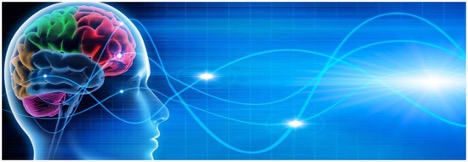Neurofeedback

What is Neurofeedback?
Neurofeedback is a more direct way of training the brain compared to typical talk therapy. It gives the brain an opportunity to function more efficiently leading to increased stability and self-regulation. By monitoring brainwaves and providing this information back to the brain in real time, the brain can adjust how it is functioning and also witness the results of these adjustments. Neurofeedback rewards or encourages adaptive adjustments while discouraging any dysregulation or maladaptive adjustments. Repeated over time, these adaptive adjustments strengthen and become new brain patterns and neural connections. This can lead to a more efficient and stable brain function.
What is Neurofeedback like for the client?
The initial session is used to assess for patterns of instability and/or dysregulation. This identifies which area(s) of the brain to target during subsequent neurofeedback sessions. After a brief check-in, a paste is used to attach electrodes to specific areas of the scalp. These electrodes detect brainwaves and relay them back to a computer where they are analyzed and processed. The client is simply watching a movie, and depending on the brainwaves present, the computer will “adjust” the quality, clarity, and volume of the movie. When the brainwave patterns are stable and regulated, the movie is full-screen, clear, and bright. When instability and/or dysregulation are detected, the movie shrinks and becomes muffled and fuzzy. The brain quickly adjusts to this and works to remain stable and regulated.

What is Neurofeedback like for the client?
The initial session is used to assess for patterns of instability and/or dysregulation. This identifies which area(s) of the brain to target during subsequent neurofeedback sessions. After a brief check-in, a paste is used to attach electrodes to specific areas of the scalp. These electrodes detect brainwaves and relay them back to a computer where they are analyzed and processed. The client is simply watching a movie, and depending on the brainwaves present, the computer will “adjust” the quality, clarity, and volume of the movie. When the brainwave patterns are stable and regulated, the movie is full-screen, clear, and bright. When instability and/or dysregulation are detected, the movie shrinks and becomes muffled and fuzzy. The brain quickly adjusts to this and works to remain stable and regulated.
What Conditions can Neurofeedback Help?
• Addiction
• Anxiety and Stress
• Autism Spectrum Disorder
• Attention Deficits (ADD/ADHD)
• Aggression
• Behavior Disorders
• Brain Injury
• Depression
• Emotional Reactivity
• Impulsivity
• Obsessive Compulsive Disorder (OCD)
• Peak Performance Improvement
• Trauma (PTSD)
• Sleep Disorders – Insomnia, Nightmares
• Anxiety and Stress
• Autism Spectrum Disorder
• Attention Deficits (ADD/ADHD)
• Aggression
• Behavior Disorders
• Brain Injury
• Depression
• Emotional Reactivity
• Impulsivity
• Obsessive Compulsive Disorder (OCD)
• Peak Performance Improvement
• Trauma (PTSD)
• Sleep Disorders – Insomnia, Nightmares
For More Information About Neurofeedback:
Make Your Appointment Today
Neurofeedback
